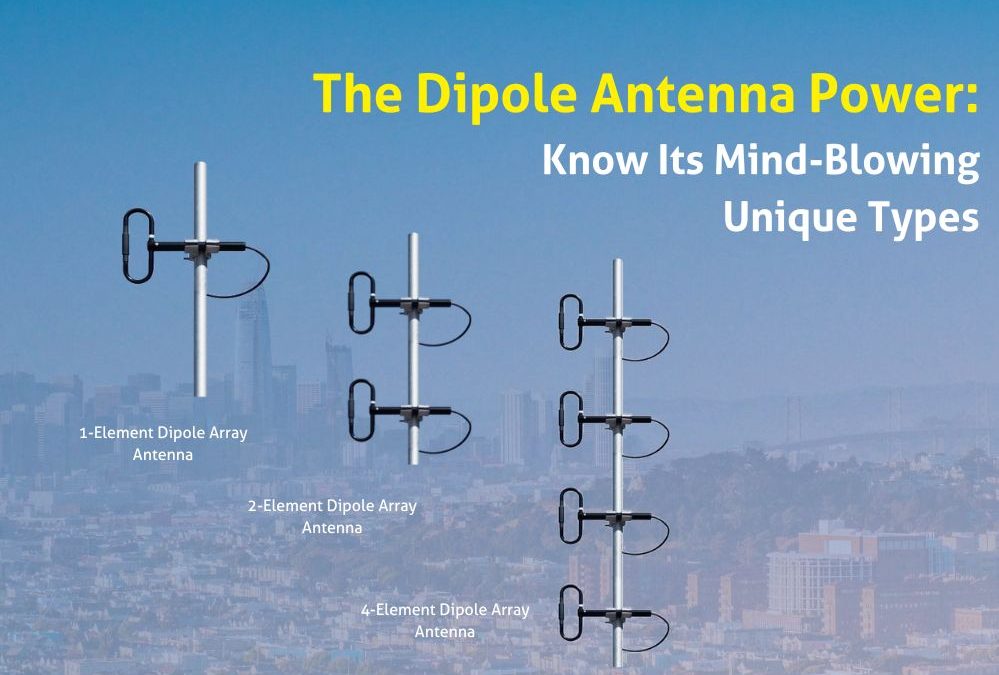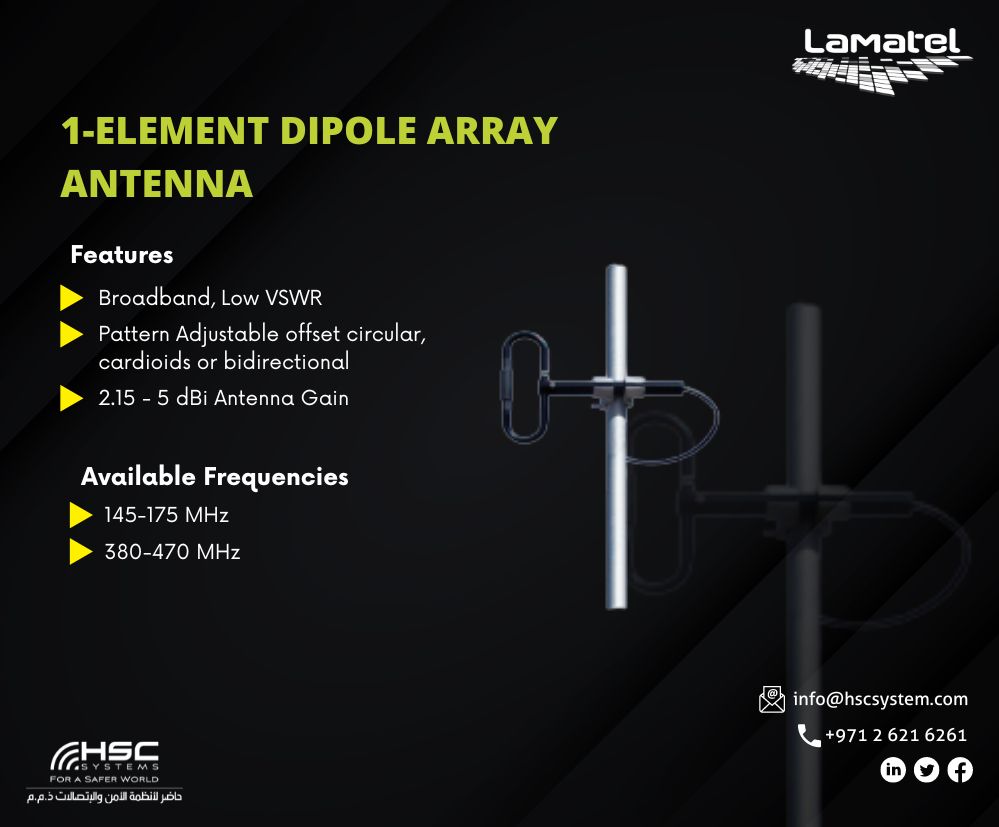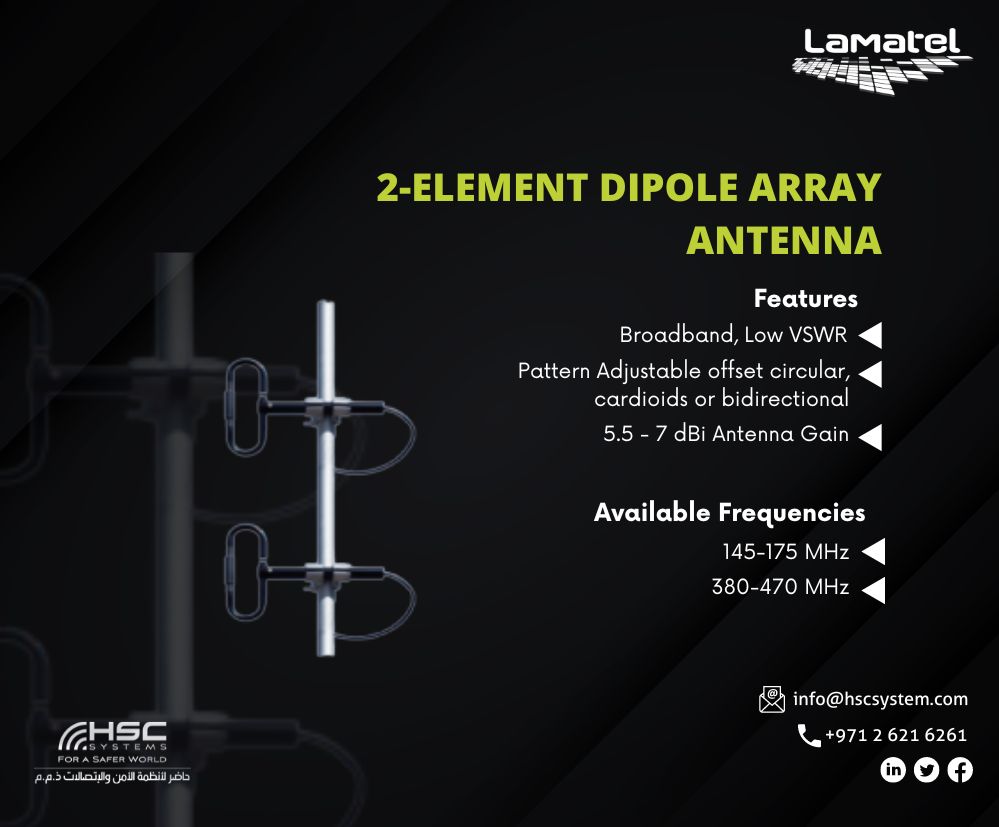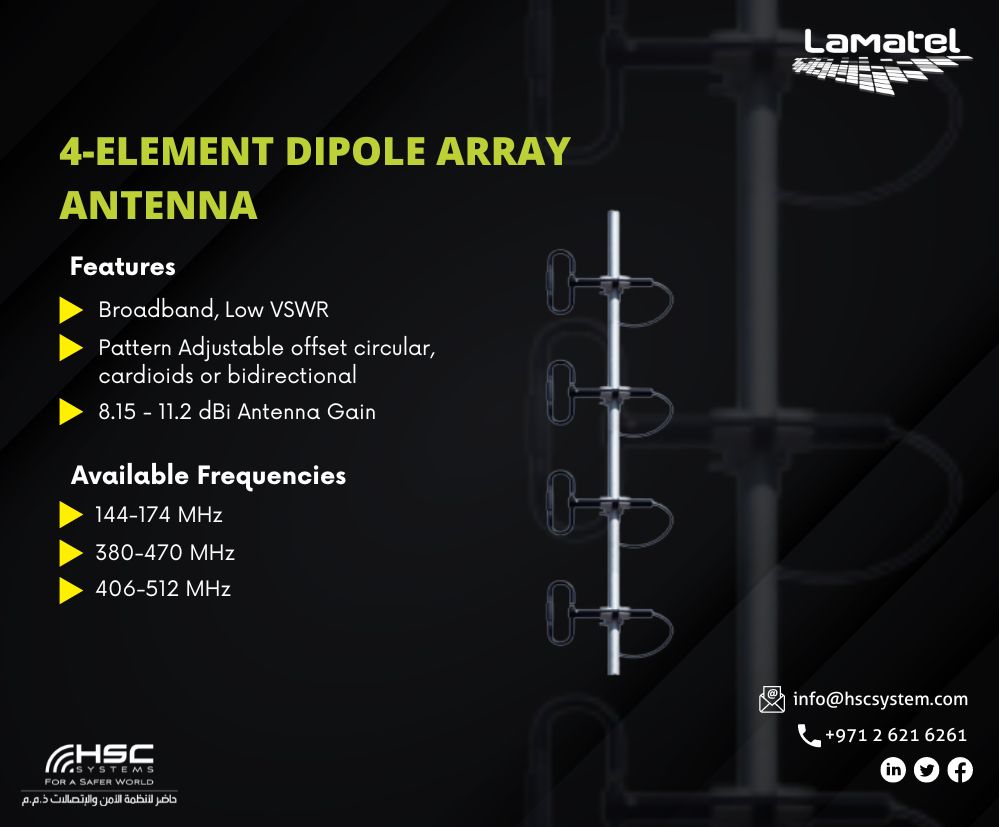Can you imagine a world without communication? It’s impossible, isn’t it? In today’s world, we rely heavily on wireless communication systems that use antennas to transmit and receive signals. One of the most common types of antennas used in communication systems is the dipole antenna. In this article, we will discuss the different types of dipole antennas and their benefits.
What is a Dipole Antenna?
– The dipole is the simplest type of antenna from a theoretical point of view. Most commonly, if consists of two conductors of equal length oriented end-to-end with the feedline connected between them.
– In radio and telecommunications, a dipole antenna is the simplest and most widely used class of antenna.
– The dipole is any one of a class of antennas producing a radiation pattern approximating that of an elementary electric dipole with a radiating structure supporting a line current so energized that the current has only one node at each end.
– Usually, a dipole antenna is made up of two identical conducting components, such metal wires or rods.
– The driving current from the transmitter is applied, or for receiving antennas the output signal to the receiver is taken, between the two halves of the antenna.
– Each side of the feedline to the transmitter or receiver is connected to one of the conductors.
What is Dipole Arrays?
– There are many types of array antennas are constructed using multiple dipoles, usually half-wave dipoles.
– The purpose of using multiple dipoles is to increase the directional gain of the antenna over the gain of a single dipole; the radiation of the separate dipoles interferes to enhance power radiated in desired directions.
– In arrays with multiple dipole driven elements, the feedline is split using an electrical network in order to provide power to the elements, with careful attention paid to the relative phase delays due to transmission between the common point and each element.
– In order to increase antenna gain in horizontal directions (at the expense of radiation towards the sky or towards the ground) one can stack antennas in the vertical direction in a broadside array where the antennas are fed in phase.
– Doing so with horizontal dipole antennas retains those dipoles directionality and null in the direction of their elements.
– However, if each dipole is vertically oriented, in a so-called collinear antenna array (see graphic), that null direction becomes vertical and the array acquires an omnidirectional radiation pattern (in the horizontal plane) as is typically desired.
– Vertical collinear arrays are used in the VHF and UHF frequency bands at which wavelengths the size of the elements are small enough to practically stack several on a mast.
– They are higher-gain alternative to quarter-wave ground plane antennas used in fixed base stations for mobile two-way radios, such as police, fire, and taxi dispatchers.
– When transmitting or receiving radio waves, an antenna array is a collection of many linked antennas that operate as one.
Dipole Arrays
– The individual antennas (called elements) are usually connected to a single receiver or transmitter by feedlines that feed the power to the elements in a specific phase relationship.
– The radio waves radiated by each individual antenna combine and superpose, adding together interfering, destructively) to reduce the power radiated in other directions.
– An antenna array can achieve higher gain (directivity) that is a narrower beam of radio waves, than could be achieved by a single element.
– In general, the larger the number of individual antenna elements used, the higher the gain and the narrower the beam.
– The driven element or active element is the element in the antenna (typically a metal rod) which is electrically connected to the receiver or transmitter.
– In a transmitting antenna it is driven or excited by the radio frequency current from the transmitter, and is the source of the radio waves.
– In a radio antenna, the feed line or feeder, is the cable or other transmission line that connects the antenna with the radio transmitter or receiver.
– It feeds the radio frequency (RF) current from the transmitter to the antenna in a transmitting antenna, where it is emitted as radio waves.
Collinear array
– A broadside array consisting of multiple identical dipole antennas oriented vertically in a line.
– This is a high gain omnidirectional antenna, often used in the VHF band as broadcasting antennas for television stations and base station antennas for land mobile two way radio.
– The purpose of stacking multiple antennas in a vertical collinear array is to increase the power radiated in horizontal directions and reduce the power radiated into the sky or down toward the earth, where it is wasted.
They radiate vertically polarized radio waves.
1-Element Dipole Array Antenna
First, the 1-element dipole array antenna, which is the simplest type of dipole antenna. It consists of a single dipole element, which is connected to a transmission line.
This type of antenna is best suited for short-range communication.
2-Element Dipole Array Antenna
Second, 2- element dipole array antenna consists of two dipole elements, each connected to a transmission line. In wireless communication systems, this kind of antenna is commonly used because it can improve signal strength and reception.
The 2-element dipole array antenna is also an excellent choice for applications that require directional coverage.
4-Element Dipole Array Antenna
Lastly, the 4-element dipole array antenna, which consists of four dipole elements, each connected to a transmission line.
In addition, this type of antenna is commonly used in applications that require high-gain and directional coverage.
Benefits of a Dipole Antenna
Not to mention, dipole antennas can offer many benefits compared to other types of antennas. So, here are some of the advantages of using dipole antennas:
1. Dipole antenna can improved signal strength
To begin, dipole antennas are known for their ability to provide better signal strength compared to other types of antennas.
This is due to their omnidirectional nature; therefore, it allows them to send or receive signals in all directions.
2. Dipole antenna can make the reception better
Indeed, dipole antennas are also known for their ability to provide better reception compared to other types of antennas.
This is because dipole antennas can pick up weak signals that other antennas may not be able to detect.
3. A dipole antenna is a cost-effective solution
Finally and importantly, dipole antennas are a cost-effective solution compared to other types of antennas, and besides this, they are easy to manufacture and install, making them an excellent choice for applications that require a large number of antennas.
4. Simplicity and Efficiency
- The simplicity is the main advantage of this antenna.
- These are extremely efficient once used at the resonant frequency.
- The gap size of the dipole dont impact the antenna’s performance
- Any signal can be received almost without worrying about its direction.
- These antennas can be reduced & resonated with a loading coil. When this coil is arranged in the center then we can get good results.
Application
The applications of dipole antennae include the following.
- These antennas are used as a basic part in complicated antennas and are also used in different areas where they can form the radiating element.
- This antenna is applicable in radio & telecommunications.
- The same antenna is used in two-way communication, for both transmission & reception.
- VHF & UHF type antennas are mainly used in land mobile communication within public safety, coastal areas, and industrial & public communication applications.
What’s more? Please feel free to send us a connection request or follow our LinkedIn page to stay in the loop.




